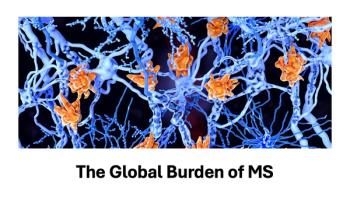
[BLOG]: Obesity drug safety review
In this blog post, Robert Kyle of AdverseEvents compares the results of a postmarket survey of 3 obesity drugs.
Recently, we at
Having been on the market for over 2 and a half years, lorcaserin is showing the safest downstream medical cost profile with an estimated cost per prescription of $2.03 compared to $2.60 for bupropion/naltrexone and $3.31 for phentermine/topiramate. The main drivers of downstream costs for lorcaserin that are currently on the drug’s label include heart valve incompetence issues as well as psychiatric issues such as suicidal ideation. Issues not on the label that are also driving downstream costs include atrial fibrillation and loss of consciousness. Although these risks are indeed serious, the reporting rates have been low. For instance, only 3 valve incompetence issues have been reported so far, which is an estimated incidence rate of roughly 3 cases for every 100,000 patients exposed.
Related:
Although the analysis for bupropion/naltrexone is preliminary because it was only approved in September 2014, we found that it has a slightly riskier safety profile than lorcaserin based on the serious adverse events reported so far. The main drivers of the downstream costs for bupropion/naltrexone that are on the label include convulsion, suicidal ideation, and angioedema. The nonlabeled adverse events driving downstream costs include deafness, pancreatitis, and cerebrovascular accident.
Approved around the same time as lorcaserin, phentermine/topiramate is showing the riskiest safety profile of the 3 obesity drugs with a cost per prescription of $3.31. The main drivers of the downstream costs for phentermine/topiramate that are already labeled include nephrolithiasis (kidney stones), angle-closure glaucoma, as well as mental impairment and suicidal ideation. The nonlabeled adverse events driving the downstream costs include deafness and pneumonia as well as vascular issues such as ischemic cardiomyopathy and intracranial aneurysm.
Although all 3 drugs showed some potentially dangerous risks, the reporting rates for all of these risks have been extremely low so far. For instance, Victoza (liraglutide, Novo Nordisk; $3.73 per prescription), a commonly prescribed and covered diabetes drug that was just recently approved for obesity, has a higher cost per prescription than all of these drugs. With the new safety information now available, we believe that it is time for more managed care companies to cover lorcaserin and potentially the other 2 obesity treatments. Obesity is among the country’s costliest health issues, leading to billions of additional healthcare costs from the conditions it can cause, such as diabetes, cardiovascular disease, and cancer.
Related:
Many managed care organizations are waiting for the results from long-term phase 4 cardiovascular outcomes trials before they make the coverage decision because of past cardiovascular issues with obesity drugs (eg, Meridia [sibutramine], “fen-phen” [fenfluramine/phentermine]) that caused them to be pulled from the market. There have now been over 2 and a half years of data with lorcaserin, however, and not a single reported serious cardiovascular issue has shown up as a safety signal according to our analysis. In other words, reporting rates of these serious cardiovascular issues are no greater with lorcaserin then they are with the average FDA-approved drug in the database. Early safety signals are typically a good indicator of whether similar issues will show up in long-term phase 4 data. For instance, safety signals for heart failure were shown for the diabetes drugs Nesina (alogliptin, Takeda) and Onglyza (saxagliptin, AstraZeneca) in our analysis prior to long-term safety data showing those elevated risks, as revealed in the results from the SAVOR and EXAMINE trials this past April.
There are still known risks with these drugs, so long-term monitoring of the postmarket data in real-time is vital for plan sponsors looking to cover them. Both lorcaserin and phentermine/topiramate are class 4 controlled substances, meaning they have dependency risks and are both undergoing required phase 4 trials to determine potential long-term cardiovascular risks. In addition, all 3 of the drugs are pregnancy category X, meaning they should not be used in women who could become pregnant. Taking these risks in mind, with appropriate restrictions in place and careful postmarket safety monitoring, there is no reason why these drugs, and especially lorcaserin, should not be covered universally by payers as another option in the fight against obesity.
Related:
Robert Kyle, co-founder and chief product officer of AdverseEvents, Inc., is in charge of defining and driving the company’s product strategy and managing the product life cycle, from conception through launch.
Disclosure information: The author reports no financial disclosures as related to products discussed in this article.
Newsletter
Get the latest industry news, event updates, and more from Managed healthcare Executive.






















































